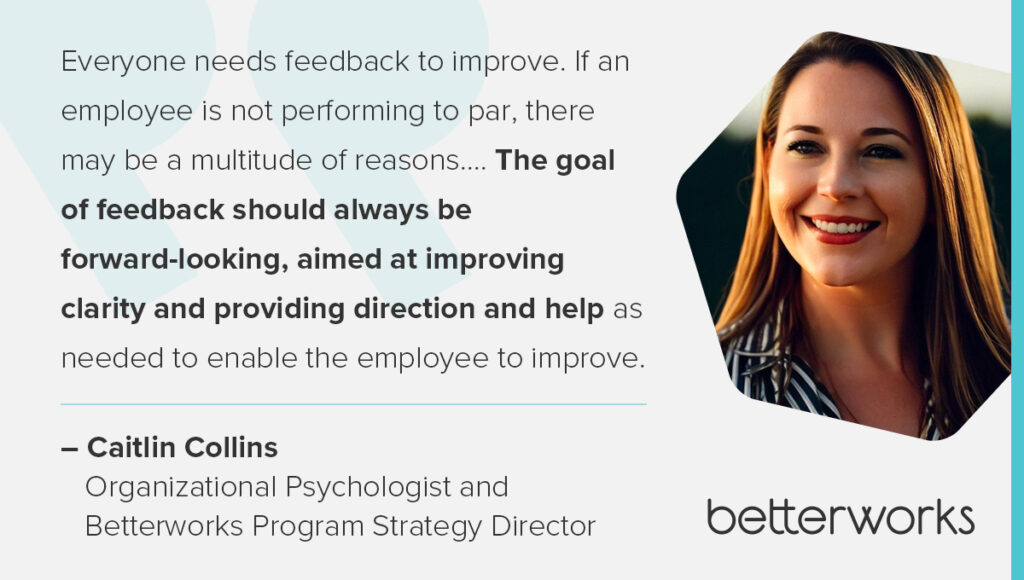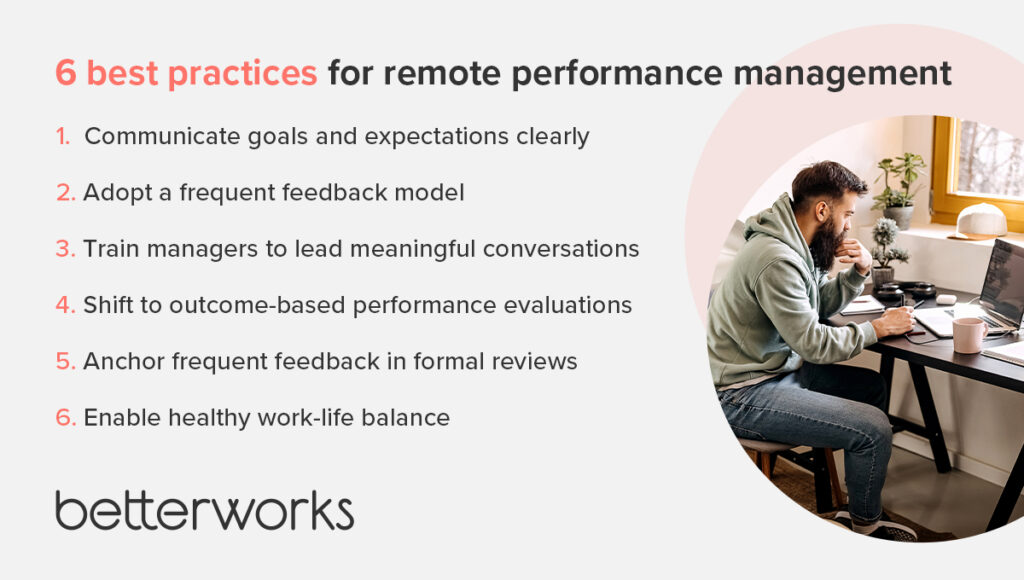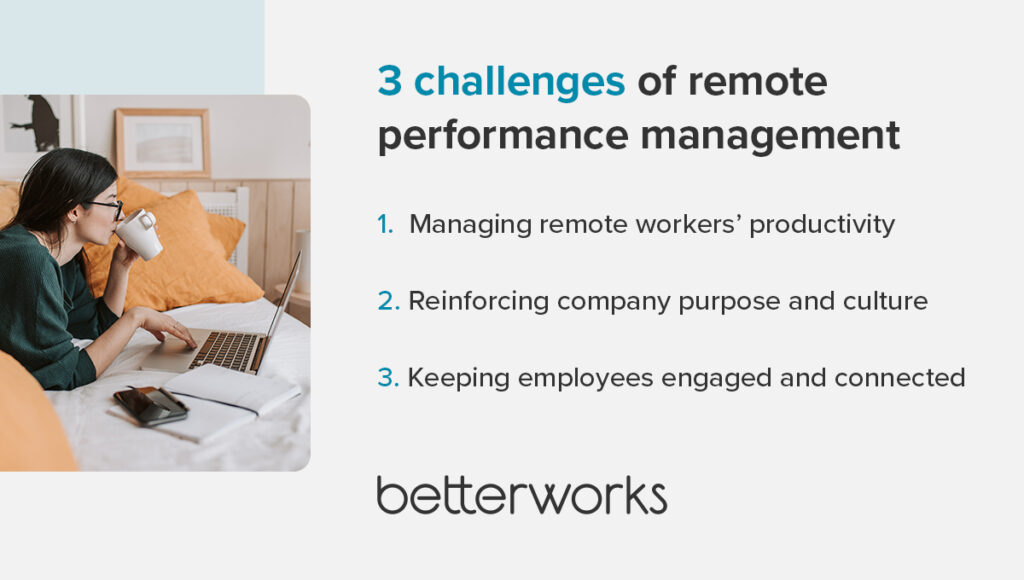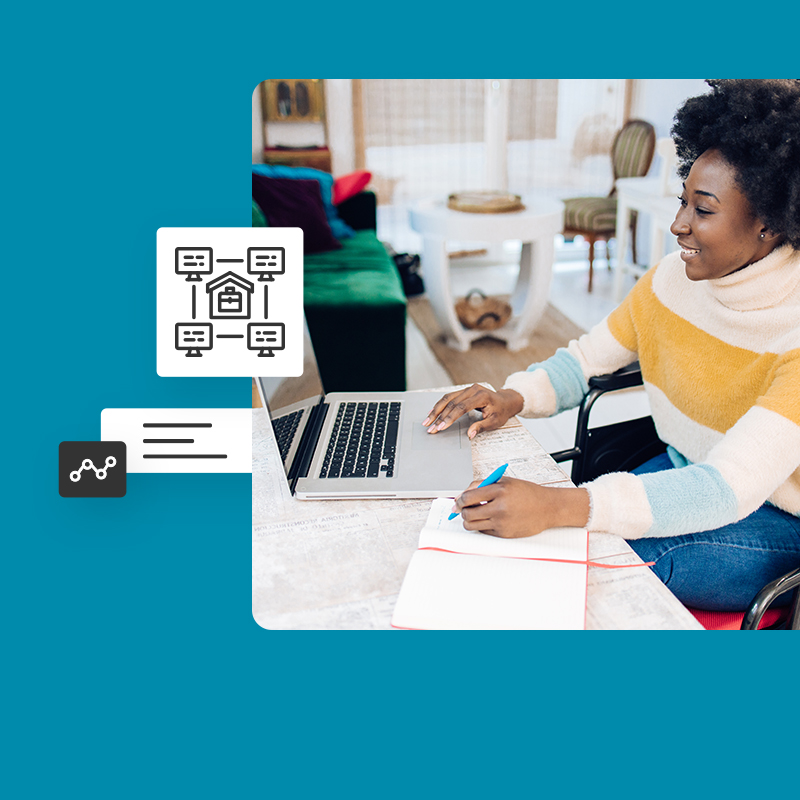Now that remote work is a long-term reality rather than just a short-term solution, we need to become more deliberate about remote performance management. Simply converting legacy performance management processes to a digital format won’t improve employee performance for remote teams. Instead, you need processes that deliver consistent experiences and fair outcomes for all employees, no matter where they are working.
More than half (55%) of employees rank fairness as the most important aspect of employee experience, according to our 2023 State of Performance Enablement report. That rings especially true when it comes to managing a remote workforce. In the absence of seeing their managers face-to-face every day, employees need clarity around their goals, performance expectations, and growth opportunities.
Learn how to revamp your performance management for remote teams so they become more engaged and productive.
6 best practices for remote work performance management
Effective remote performance doesn’t just happen. It requires intentional thought and actions from HR and managers. These best practices provide a blueprint for improving remote performance outcomes and providing a better employee experience.
Communicate goals and expectations clearly
Goal clarity is essential for successful remote performance management. When employees understand the business’ goals, they can envision their role in helping the organization execute its strategy. That drives a stronger sense of purpose and connects employees to the business and their colleagues. Managers ultimately approve goals, but they should develop them in collaboration with their reports, including remote workers. Together, they can set individual goals that align with higher-level objectives.
Once managers and team members have agreed on goals, managers need to set expectations for what achievement looks like. Usually, employee goals will draw from the role’s specific skills and attributes. As HR leaders, make sure that all job descriptions are updated and accessible to employees to help managers set clear expectations for performance.
Finally, it’s not just the goals themselves that need to be clear. Train managers to communicate business- and team-level goals, including what success looks like and checkpoints along the way.
Adopt a frequent feedback model
When employees and managers work on-site, they’re more likely to run into each other and have casual conversations about a project or their performance. In remote settings, those moments must be planned.
That said, don’t put random meetings on the calendar. Rather than trying to engineer virtual chit-chat, workplace communication between managers and employees should have a purpose and be constructive. If not, employees will feel like they’re being micromanaged.
Remote workers benefit most from a frequent feedback model of performance management. These are ongoing, scheduled check-in conversations between managers and reports. HR can help managers get comfortable with these discussions by providing a list of possible prompts, especially for video chats, phone calls or using tools like an outbound dialer to maintain consistent communication with remote teams. By breaking the ice with prompts, managers can get a better sense of what employees need.
Using this model, managers provide feedback that drives solutions. Rather than criticizing an employee for poor performance, for example, the manager would investigate why it happened and suggest changes to prevent a recurrence.
“Everyone needs feedback to improve, says Caitlin Collins, program strategy director at Betterworks. “No one intentionally sabotages themselves by making mistakes or underperforming. If an employee is not performing to par, there may be a multitude of reasons, including some that are beyond their control or are the responsibility of their manager. The goal of feedback should always be forward-looking, aimed at improving clarity and providing direction and help as needed to enable the employee to improve.”
Frequent feedback can build trust between managers and their reports, allowing them to have more honest and productive conversations.

Train managers to lead meaningful conversations
Frequent feedback models succeed when managers facilitate productive conversations. That starts with the manager’s mindset. Train them to focus on the bigger picture and forward-facing improvement rather than micromanaging employee performance or relitigating the past.
Train managers to function more as performance coaches who can help employees set individual goals to improve performance. Managers should ask leading questions that encourage employees to explain their thinking and observations. This can help both parties better understand weaknesses (or strengths) in processes and habits that affect performance. When problems are identified, managers can help employees explore the situation and possible remedies that improve performance outcomes.
These remote conversations should focus on performance goals that link to business outcomes. Managers should adopt a performance enablement mindset, which includes a shared responsibility for helping employees reach their goals.
Shift to outcome-based performance evaluations
Some workplace metrics can be misleading when measuring high performance — for example, constant activity by a worker that doesn’t further task completion or business goals. An employee who consistently stays late, for example, doesn’t necessarily have better performance than colleagues who finish work on time. Those long hours could signal that they have too much work or suffer from poor productivity.
The larger point for managers of remote or hybrid workers: Good managers don’t need to see their reports in action to know that people are working.
Remote performance management should focus on employee achievements, including speed and quality, rather than assessing or micromanaging their process and activity. Train managers to assess output based on expectations that are concrete, measurable, and indicative of progress toward a specific objective.
Frequent feedback conversations shouldn’t dwell on input unless it directly impacts output, such as a manager helping an employee find a more effective work process. As long as employees are meeting expectations and not cutting corners (failing to take security precautions, for instance), then let them discover how they work best.
Good managers don’t need to see their reports in action to know that people are working.
Anchor frequent feedback in formal reviews
Remote performance management relies on manager-employee touch points, which include frequent conversations and formal reviews that align expectations and set baselines for performance.
That doesn’t mean returning to the traditional annual review, however. Instead, conduct quarterly performance evaluations to keep employees engaged while tracking their growth over time.
Because these quarterly reviews are drawn from daily or weekly check-ins, nothing in the evaluation should surprise the employee. And, if managers have a robust performance management tool for tracking their conversations with employees, the evaluations themselves become much easier to write and track.
By the time these reviews roll around, the employee should feel comfortable having a meeting via videoconferencing software, allowing for some level of personal connection even if an in-person conversation isn’t possible.
Enable healthy work-life balance
Every worker can face challenges when it comes to work-life balance, employee satisfaction, and forming meaningful relationships with their co-workers. These challenges can be especially acute for remote employees if they struggle to separate their home life from work or feel disconnected from their colleagues.
Regularly assess the workload of remote employees and provide support in managing their tasks. Encourage open communication and feedback to identify challenges related to workload. If necessary, adjust deadlines, redistribute tasks, or provide additional resources to ensure a manageable workload.
Foster a culture of open dialogue and flexibility when it comes to work-life balance. Do this for all employees while recognizing that remote employees might need encouragement to communicate their needs and challenges. Help managers recognize that they can enforce accountability while still being supportive and offering flexibility. By creating an environment where work-life balance is valued and supported, remote employees will feel more empowered to prioritize their well-being.

3 challenges of performance management for remote workers
HR leaders should ensure their performance management program accounts for the distinct challenges facing remote employees and their managers. Here are three common challenges these managers face.
Managing remote workers’ productivity
Remote employee productivity management can be challenging because direct observation is much less feasible. This can lead to managers lacking trust in their workers or feeling they can’t hold them accountable, especially if they used to manage these employees on-site.
Some remote employees can struggle with setting priorities and managing their time, while managers might not detect these issues until something falls through, like a missed deadline or a poorly delivered project.
The absence of face-to-face interaction can hinder effective communication and coordination, potentially leading to lower productivity, priority misalignment, and delays.
To overcome these challenges, managers should start by clarifying expectations and goals, including daily priorities. Regularly communicate and reinforce these expectations, including in check-in conversations, to maintain focus and accountability. Leverage messaging apps that enable employees to communicate as needed with their manager and team.
Make these steps easier by using technology, such as project management & time tracking software, to streamline or automate communication, collaboration, and task tracking. Managers can use individual check-ins, virtual team meetings, and shared collaboration tools like Slack or Microsoft Teams as opportunities for assessing productivity.
Reinforcing company purpose and culture
Fostering belonging, collaboration, and shared values can be more difficult without a shared physical space. Additional challenges arise when remote employees have different work schedules, time zones, or cultural backgrounds. The absence of informal interactions and spontaneous conversations can keep workers from building relationships and a strong team culture.
To overcome these challenges, make sure everyone understands the company’s mission, vision, and values. Reinforce company values through virtual meetings, newsletters, recognition of achievements that reflect your company’s core values, and other internal communication channels.
Secondly, encourage virtual team-building activities that remind employees that everyone’s working toward a shared goal, even if they aren’t in the same location. Consider asking each team to set a stretch goal each quarter. Aspirational goals can encourage focused and frequent team interactions that drive innovation and bring employees together, including remote workers.
Keeping employees engaged and connected
Remote employees can become disconnected from their colleagues and the organization, leading to a decrease in motivation and engagement. Relatedly, remote work can sometimes lead to feelings of isolation and a lack of visibility, further reducing employee engagement.
Frequent contact with managers and peers helps employees stay engaged and anchored to the team. These conversations give employees a chance to speak up while illuminating what the rest of the team is working on. By showing how everyone’s contributions drive better outcomes, you can improve employee engagement and reduce the risk of turnover among your remote employees.
Encourage employees to build connection by discussing non-work-related activities and interests. Informal sharing at the start of group meetings is a natural way to build rapport. Schedule group activities, such as celebrating team wins or a life event, like a marriage or the birth of a team member’s baby, through virtual get-togethers and games to provide an avenue for helping employees feel connected.

Improving employee performance in remote work environments
Remote work demands a reimagined approach to performance management. As the architects of organizational success, HR leaders can shape a future where teams flourish, regardless of location. Mastering remote performance management is crucial to driving better business outcomes and creating organizations where people feel connected and productive.
Want to learn more? Discover some of the essential benefits of performance enablement.


